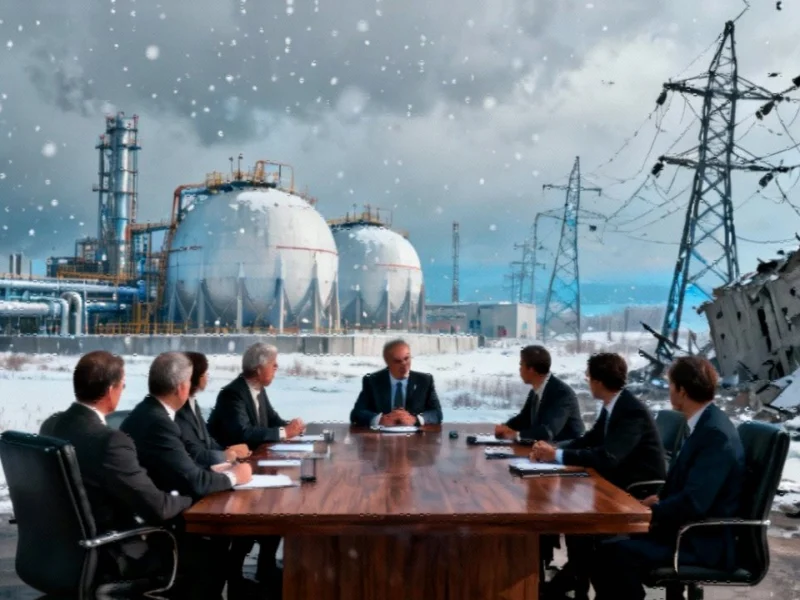TITLE: UK Energy Strategy Faces Cost Reality Check as Suppliers Demand Pragmatic Overhaul
Energy Bill Promises Collide With Infrastructure Reality
The UK government’s ambitious clean energy plan is facing mounting pressure from industry leaders who argue that current approaches risk driving up consumer costs unnecessarily. Energy security secretary Ed Miliband’s commitment to reduce household bills by £300 by 2030 appears increasingly challenging as industry executives present detailed cost analyses that contradict the government’s optimistic projections.
Last week’s testimony before a Commons select committee revealed a stark disconnect between political promises and operational reality. Rachel Fletcher of Octopus Energy warned that “if we continue on the path we are on, in all likelihood electricity prices are going to be 20% higher even if wholesale prices halve.” Her assessment was echoed by E.On UK’s Chris Norbury and EDF UK’s Simone Rossi, creating a unified industry front calling for policy reconsideration.
The Hidden Costs of Rapid Decarbonization
Behind the concerning projections lies a complex web of infrastructure investments that consumers ultimately fund through their bills. The £80 billion grid upgrade, subsidies for renewable capacity under construction, multi-year charges for Sizewell C nuclear power station, and transmission company returns approved by Ofgem collectively contribute to what Fletcher termed “about £300 [a year] of pressure” from non-commodity costs.
These developments in energy infrastructure parallel wider industry trends where ambitious technological transitions require careful financial planning. The current approach to grid capacity appears particularly problematic, with suppliers noting that capacity is being commissioned before needed, locking in costs that customers must bear regardless of actual usage patterns.
Questioning the 2030 Deadline
At the heart of the debate is whether the government’s 2030 target for 95% low-carbon electricity generation represents sensible policy or political symbolism. Leading energy economist Sir Dieter Helm summarized the situation bluntly: “We have hit the reality wall. It isn’t going to be £300 cheaper – unless the gas price falls very sharply.”
The fundamental question remains: would achieving 80% low-carbon generation by 2032 rather than 95% by 2030 genuinely jeopardize the UK’s long-term decarbonization strategy? Most experts suggest the difference would be negligible, while the cost savings could be substantial by avoiding the premium associated with rushed implementation.
Practical Alternatives Emerging
Industry leaders propose several pragmatic adjustments that could maintain progress toward clean energy goals while containing costs:
- Address constraint costs: The projected £4 billion in payments to windfarms to turn off during excess generation represents a significant inefficiency that smarter grid management could reduce
- Timing renewable deployments: With offshore wind strike prices reaching £113 per MWh in recent auctions compared to wholesale prices of £83, delaying some projects until borrowing costs decrease could yield substantial savings
- Embrace demand-side solutions: With electricity demand 9% lower than 2019 levels, incentivizing efficiency and flexible consumption may prove more cost-effective than building excess capacity
These energy sector challenges reflect broader industry developments where partnerships and technological innovation are reshaping traditional approaches to infrastructure modernization.
Budgetary Realities Loom Large
Chancellor Rachel Reeves faces difficult choices as the bill-reduction promise conflicts with infrastructure funding requirements. The potential removal of 5% VAT on energy bills, costing £2.5 billion, illustrates the financial pressures mounting on the Treasury. As Fletcher noted, “There is no budgetary control of this,” highlighting the need for more disciplined oversight of energy transition costs.
This financial balancing act mirrors sector-wide trends where public commitments meet funding realities. The government’s position is further complicated by what Miliband correctly identifies as “the legacy of decades of underinvestment in energy in this country,” requiring catch-up spending regardless of decarbonization goals.
Path Forward: Pragmatism Over Politics
The supplier warnings should mark a turning point in the clean energy transition. Rather than treating the 2030 target as immovable, policymakers could demonstrate seriousness through measured adjustments:
- Scale back the AR7 offshore wind auction from the expected 8+ GW to perhaps 4 GW, signaling cost discipline
- Prioritize grid optimization over rapid capacity expansion
- Develop more sophisticated cost-benefit analyses for infrastructure timing
- Increase transparency about who pays for which components of the energy transition
These strategic adjustments in the energy sector align with related innovations across industries where workflow optimization and efficiency are becoming paramount. Similarly, the integration of advanced technologies reflects market trends toward customized solutions in complex operational environments.
The clean energy transition remains essential, but its implementation requires balancing environmental goals with economic reality. As the UK moves forward, the most sustainable approach may be one that acknowledges cost constraints while maintaining momentum toward decarbonization—even if that means adjusting arbitrary deadlines in favor of more economically sensible timelines.
This article aggregates information from publicly available sources. All trademarks and copyrights belong to their respective owners.
Note: Featured image is for illustrative purposes only and does not represent any specific product, service, or entity mentioned in this article.



